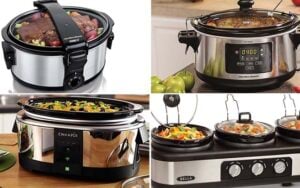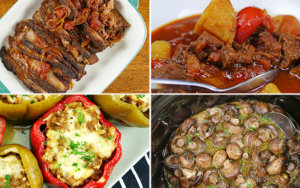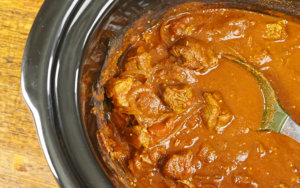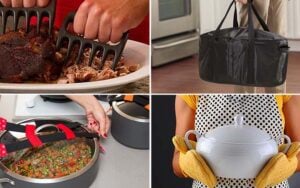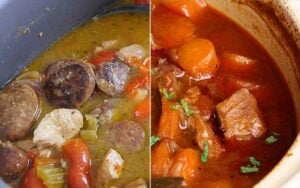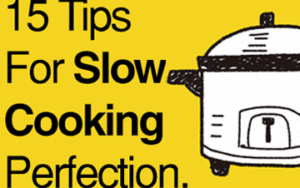For some using a slow cooker is pretty straight forward but for others it can be quite daunting.
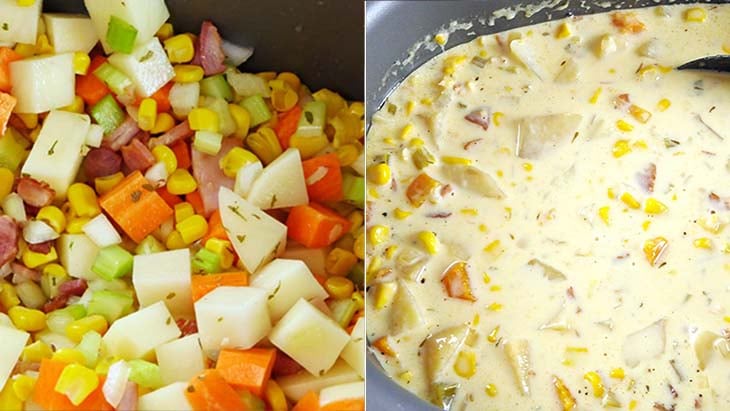
In this guide, I will take you through how to use a slow cooker and anything else you need to know.
Before we get started it’s important to remember that slow cookers can vary heavily from brand to brand.
I will try to cover as much as possible in this guide so you should be able to work out the best method for your slow cooker.
Preparing food for the Slow Cooker
Preparing food for the slow cooker is pretty straightforward and shouldn’t take up a huge amount of time. There are a few things that you should know when you go to do this so you can get the best results.
Try to cut your vegetables and meats into evenly sized cuts. This will make sure everything is cooked evenly rather than ending up with some bits of food undercooked and other bits overcooked. Also, some vegetables such as potato will take much longer to cook than other vegetables so you may want to cut these into smaller chunks.
Don’t add too much liquid to the slow cooker as it will not evaporate. Most meat, vegetables and other ingredients will add to the liquid throughout cooking. If you end up with too much liquid then you can thicken it with some cornstarch.
Avoid using frozen meat in the slow cooker as it can lead to food poisoning. It’s best to defrost beforehand, you can use a microwave to defrost quickly if you’re running low on time.
Frying meat and spices before adding them to the slow cooker will help add flavour and texture to your dishes. However, it is not compulsory and you will be fine if you just skip this and go straight to adding the food to the slow cooker.
Adding food to the Slow Cooker
There is no specific method to adding food to the slow cooker but there are a few things that you can do so you can get better results. If you’re ever in doubt, a recipe should specify anything to be aware of.
Root vegetables are best placed at the bottom of the slow cooker as it will help them cook faster. This will ensure they’re fully cooked when you go to serve. Other foods such as meat should be placed on top of the vegetables so they cook slower.
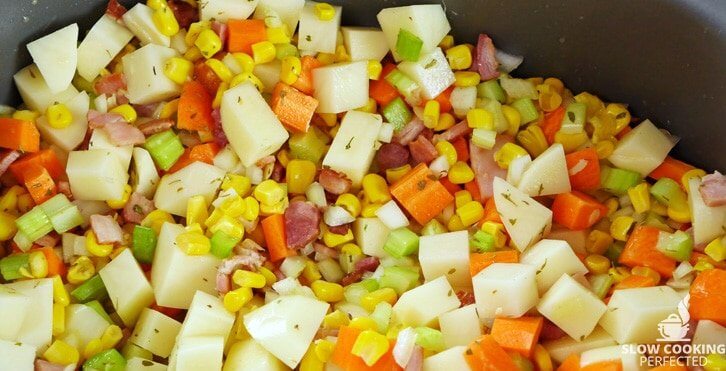
It’s important to not overfill the slow cooker as it may overflow and damage heating elements surrounding the pot. If it overflows it will also create a lot of cleaning up so it’s really not ideal to overfill the pot. You may find it will also slow down the heating process so your food will take longer to cook.
Any dairy, pasta or greens should be added towards the end of cooking unless specified by the recipe. These ingredients tend to cook quite fast so they are not ideal for cooking over a long period of time.
Cooking in the Slow Cooker
Once you have added all your ingredients you’re now ready to turn on the slow cooker and get your food cooking. Now this is the part where things can change heavily depending on what slow cooker you have bought.
Depending on the slow cooker you bought there will be at least two to four heat settings. These are keep warm, low, medium, and high, some models may only have low and high.
The way the heat settings are displayed can vary, for example some will be represented in numbers, others just simple lines and finally some in just plain English.
Keep Warm – This is an option on most modern slow cookers and should only be used after your food has finished cooking. It will keep your food warm but should only be used for a short amount of time to prevent the food from spoiling.
Low – Low is the recommended cooking heat for most recipes as it will make sure your food is cooked correctly and all the flavours are fully developed by the end of cooking. It’s also perfect if you want your food to be cooking over the course of a day.
Medium – This exists on some slow cookers but isn’t utilised in most slow cooker recipes. It’s a good option for anyone who needs their food cooked faster but don’t need it super-fast.
High – This is the heat setting that you may need for some recipes but is only really used for when you need food fast. Most dishes will cook just fine on high but will overcook if left on for too long.
If you need to convert times between high and low then the image right below is an incredibly handy reference sheet.
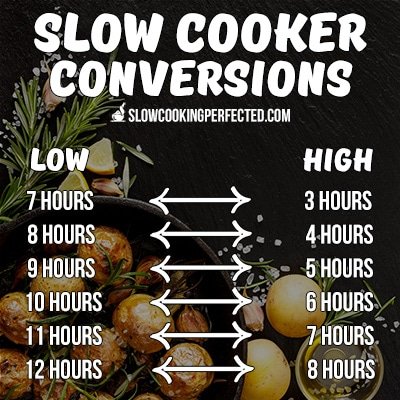
It’s important to make sure you keep the lid on the slow cooker as it’s an essential part. If you remove it then a lot of heat will escape and it will end up lengthening the cooking time. It will also allow moisture to escape which can lead to your food drying out and burning.
Timers are pretty important when it comes to slow cooking as they will help prevent your food from overcooking if you’re unable to switch the device to “keep warm” or off. Most slow cookers now have these inbuilt otherwise a quality powerpoint timer should suffice.
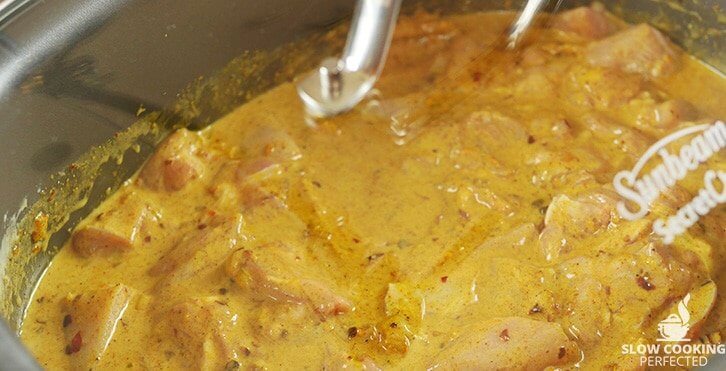
There is probably a lot more to know on how to use a slow cooker when it comes to getting your food cooked perfectly but this is the most essential information you need to know.
Reheating food in the Slow Cooker
One of the best things about slow cooking is the leftovers as you will often find that one meal produces a ton of food, usually more than you need unless you’re feeding a crowd.
If you have some leftovers it’s important that you do not reheat them in the slow cooker. The time it takes to reheat the food could encourage the growth of bad bacteria which can lead to food poisoning. Simply reheat in a hot oven, microwave, or a hot frying pan instead.
If you need more advice for slow cooking be sure to check out my guide on 15 tips for slow cooking. They will help you improve the experience of slow cooking and hopefully lead to better results.
I hope that this guide has shown you how to use a slow cooker and that you are now able to slow cook in confidence. If you believe I have missed something or you have a question then please don’t hesitate to leave a comment below.
